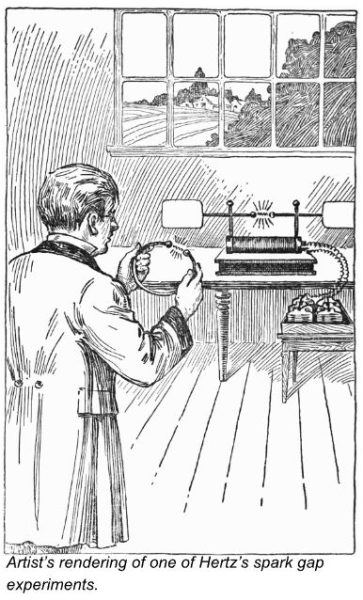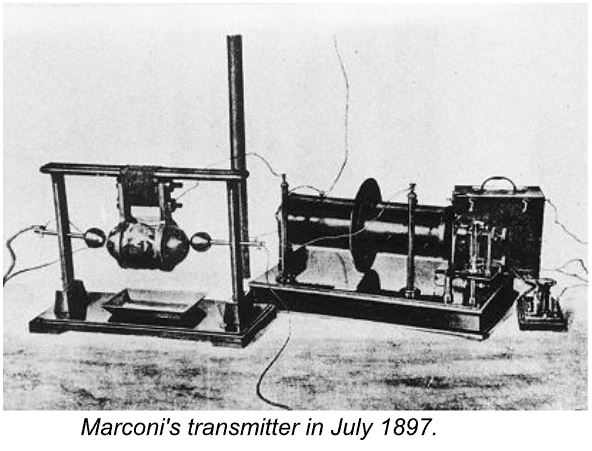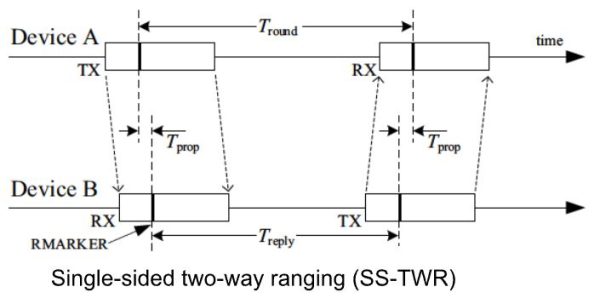By Rich Rarey
Senior Software Engineer, Bluetooth SME
Valtech Mobility Detroit
We have long been interested in furthering Vulnerable Road User (VRU) safety at the Valtech Mobility Detroit (formerly Tome Software) Safety Team. Our transmission and reception of SAE Standard J2735 Safety Messages using Bluetooth® Wireless Technology for device-to-vehicle (D2V) communication has been demonstrated in a variety of smartphones and embedded systems for several years now. Using Extended Advertisements on Bluetooth Low Energy as a “conduit” is excellent for this purpose: It is low-cost, ubiquitous, the standards are freely available, hardware is plentiful, and there is support from groups like the Bluetooth SIG, the Bluetooth Developer Academy, and others.
It’s critically important for the moving vehicle to know, with some precision, where the VRU is in relation to it. In addition, predicting the VRU’s intent by its heading, acceleration, and speed adds more accuracy to decision making: alert the vehicle driver, or not. Our embedded D2V devices and smartphone applications have been transmitting GNSS location/heading/speed data, provided by an external chip on our embedded devices, or the smartphone’s own GNSS chip set.
This is satisfactory for reasonable positioning, but the GNSS location (latitude and longitude) data may be “jittery” when trying to resolve locations below a few meters. These inconsistencies in location data become much worse in an urban canyon environment where tall buildings interfere with GNSS positioning signals. VRUs, such as bicycles, pedestrians, scooters, and the like, are so much smaller and potentially less visible than a vehicle, and we feel it’s important to wring out as much location precision as possible.

In searching for ways to improve VRU position reporting, we’ve begun exploring ultra-wideband (UWB) technology which may complement our current GNSS location services and could potentially add centimeter accuracy to safety messages. We’re also interested in deploying beacons for road worker safety in and surrounding a work zone. UWB could help dynamically outline work zones, as well as locate markers, workers, and materials in that zone.
In our initial research, we were unfamiliar with UWB technology and were surprised by its long history starting in the late 19th century. The first ultra-wideband transmission was made by physicist Heinrich Hertz in November 1886. His sole objective was to validate James Clerk Maxwell’s theory of electromagnetism, which his experiments did spectacularly. The results of Hertz’s research became the basis for all radio transmission, but his focus was so intense on proving Maxwell’s equations, he apparently missed the importance of his work, stating that the practical application of his discoveries was, “Nothing, I guess.”
Eleven years later, Guglielmo Marconi used Hertz’s discoveries and the work of others to devise a UWB transmitter that employed on-off keying (OOK). His spark gap (i.e. “impulse”) transmitter and receiver revolutionized human communications, and led to a flurry of competition and remarkable technical advancements.
 Eventually, in 2002, the FCC, after extensive study, allocated 7.5GHz of spectrum for unlicensed, commercial UWB purposes, specifying strict power and emission limits. Below is the UWB spectrum; the blue channels have a 500MHz bandwidth while the yellow channels have much more bandwidth[5].
Eventually, in 2002, the FCC, after extensive study, allocated 7.5GHz of spectrum for unlicensed, commercial UWB purposes, specifying strict power and emission limits. Below is the UWB spectrum; the blue channels have a 500MHz bandwidth while the yellow channels have much more bandwidth[5].
Interestingly, FCC regulation 15.521(a) says, “UWB devices may not be employed for the operation of toys. Operation onboard an aircraft, a ship or a satellite is prohibited.” Beware, then, of using a smartphone’s UWB features to find your device or share a file while flying, sailing on a cruise liner, or on the International Space Station.
A 2004 release by IEEE of standard 802.15.4 (and the latest update in 2020) specified the media access control (MAC) and physical later (PHY) for ultra-wideband for wireless connectivity. The standard, in its summary, states that UWB supports real-time precision ranging capability that is accurate to within a few centimeters. To promote UWB use and acceptance, two different but complementary groups formed in 2019: the FiRa Consortium and UWB Alliance, focused on UWB “fine ranging” and UWB general promotion/testing/advocacy, respectively.
There are several different methods that can be implemented for UWB fine ranging. The simplest of which is two-way ranging (TWR). TWR requires that the target and host devices communicate with each other, each precisely measuring the transmission and reception times of the message frames. These transmissions are very fast, measured in nanoseconds, and spread over the entire channel bandwidth. The standard mentions that these results would be processed by levels higher than the MAC for computing the ranges between devices, presumably because there’s a lot of data flying around very quickly. The large UWB bandwidth is resistant to noise and interference, and some literature mentions a 100-meter range (IEEE 802.15 task group 4ab), but it is most reliable at a range of 1-50 meters. This, however, has limitations when scaling to a large number of devices.

Another method commonly implemented is time difference of arrival (TDoA). Unlike TWR, TDoA utilizes one-way communication to do its ranging. When the tag (the UWB device that is moving) does the calculation, it allows for scalability into the thousands of nearby devices. However, to achieve this, there’s a catch. You must have multiple anchors (UWB devices in fixed positions) that are tightly synchronized. Using three anchors, you can then do 2D triangulation. If you add a fourth anchor, you can obtain elevation. While mostly used in indoor applications today, TDoA could easily be implemented at those busy intersections in urban canyons where GPS fails or in work zones where the boundaries of that work zone don’t often change.
As of today, there are only a few phones that support UWB[10]:
- Every model in the Apple iPhone 11, iPhone 12, iPhone 13, and iPhone 14 series. (The iPhone SE series does not support ultra-wideband).
- Google Pixel Fold, Pixel 6 Pro, Pixel 7 Pro.
- Samsung Galaxy Note 20, S21+, S22+, Z Fold 2, 3, 4.
- Apple Watch Series 6, Series 7, and Series 8.
It is clear that UWB has not yet reached the mainstream and is limited to only high-end mobile devices. Apple devices can only track AirTags currently. However, as of April 2023, Android has released an UWB APIs to further its use in mobile devices. While it’s yet to be seen whether this technology takes hold in mobile devices, it is starting to be used more and more by the automakers to implement mobile phone as a key (Paak) technology which suggests that its support will spread to lower cost devices.
After making a preliminary exploration into UWB technology and its potential use in our VRU safety projects, I can offer these observations:
- Ultra-wideband technology features are extremely intriguing, just from reading the standards documents: resistance to interference, low power, high transmission bitrate, location tracking to within centimeters.
- Parenthetically, reading a standards document is like shopping at a thrift store: There may be some really valuable nuggets within that will inspire one to think of new applications.
- The lack of existing interoperability between UWB devices/chips and different interpretations of profiles built on IEEE MAC and PHY protocols discourage wide acceptance.
- The Valtech Detroit Safety Team’s work has been deeply focused on technologies that are ubiquitous, affordable, and flexible, such as economical smartphones, Bluetooth wireless technology, LTE, and the J2735 message structure. Whether UWB technology can check all these boxes is yet to be seen.
- For time-of-flight ranging to get real-time location tracking, two-way communication and data processing must take place between UWB-equipped devices. This is burdensome. A time distance of arrival localization (TDoA) uses a one-way transmission from the device to multiple receivers (anchors). The anchors must be in communication with each other for synchronization. There is good location accuracy when the device is within the area of all the anchors. This may be practicable where there are multiple fixed Road Side Units receiving and processing signals from VRUs, perhaps at busy intersections.
- Deeper study in UWB is warranted and acquiring development kits will increase the Safety Team’s knowledge and experience.
Please note that at present, we have not implemented Bluetooth Positioning or ultra-wideband technology in our embedded devices and apps; this blog describes our exploration into UWB.
References
- ITU Recommendation giving the list of terms and definitions as well as general characteristics of UWB technology.
https://www.itu.int/dms_pubrec/itu-r/rec/sm/R-REC-SM.1755-0-200605-I!!PDF-E.pdf - A good overview of UWB https://en.wikipedia.org/wiki/Ultra-wideband
- An Overview of UWB Standards and Organizations (IEEE 802.15.4, FiRa, Apple): Interoperability Aspects and Future Research Directions (June 2022) https://ieeexplore.ieee.org/stamp/stamp.jsp?arnumber=9810941
- Testing UWB devices and principles of UWB https://mcs-testequipment.com/content/files/Testing-UWB-Whitepaper-031620-web.pdf
- FiRa Consortium, advocacy group for Fine Ranging: The FiRa Consortium is dedicated to transforming the way we interact with our environment by enabling precise location awareness for people and devices. https://www.firaconsortium.org/
- UWB Alliance, Formed in 2019 and asserts that there will be 1 billion devices using UWB by 2025 https://uwballiance.org
- FCC Regulation specifies Wideband Operation https://www.ecfr.gov/current/title-47/chapter-I/subchapter-A/part-15/subpart-F
- TCB Workshop Ultra-Wideband (UWB) Slide deck (2004), Office of Engineering and Technology/Equipment Authorization Branch, FCC Laboratory https://transition.fcc.gov/oet/ea/presentations/files/may04/May_04-Ultra-Wideband-AL.pdf
- Silicon Labs BLE-119: Bluetooth Direction Finding (Video) https://www.silabs.com/support/training/bluetooth-applications-5-1-5-2-series/bluetooth-direction-finding
- What is UWB, and why is it in my phone? Ultra-wideband technology, explained (May 2023) https://www.androidauthority.com/what-is-uwb-1151744/
- This paper introduces a new method to estimate the angle of arrival of ultra-wideband radio signals with which existing time-of-flight based localization and radar systems can be augmented at no additional hardware cost. The method does not require multiple transmitter or receiver antennas, or relative motion between transmitter and receiver. Instead, it is solely based on the angle-dependent impulse response function of ultra-wideband antennas.
https://www.ncbi.nlm.nih.gov/pmc/articles/PMC6832923/ - UWB Localization Techniques In Comparison:TOF & TDOA
https://uwb.woxuwireless.com/views/blog/UWB_Localization.html - UWB Chip manufacturer with development kits available https://www.inpixon.com/technology/standards/ultra-wideband
- A well written overview of UWB, history, and technology, from which this blog draws deeply.
https://www.firaconsortium.org/sites/default/files/2020-10/introduction-to-impulse-radio-uwb-seamless-access-systems-102820.pdf
Other References
A fun romp in the realm of spark-gap transmitters:
en.wikipedia.org/wiki/Spark-gap_transmitter
Short bio of Heinrich Hertz and his significant contributions to electromagnetism knowledge:
www.famousscientists.org/how-hertz-discovered-radio-waves/
Fun! The Complete Radio Book By Raymond Francis Yates, Louis Gerard Pacent (1922):
books.google.com/books?id=rsxBAQAAIAAJ&pg=PA32#v=onepage&q&f=false
It’s true! Using a telegraph key is amplitude-shift keying (ASK) modulation:
en.wikipedia.org/wiki/On%E2%80%93off_keying
Early radio technology pundits exhibiting the same angst that affects new technology today! (1926):
worldradiohistory.com/Archive-Radio-Broadcast/Radio-Broadcast-1926-11.pdf
Signup For The Bike Lane Newsletter
